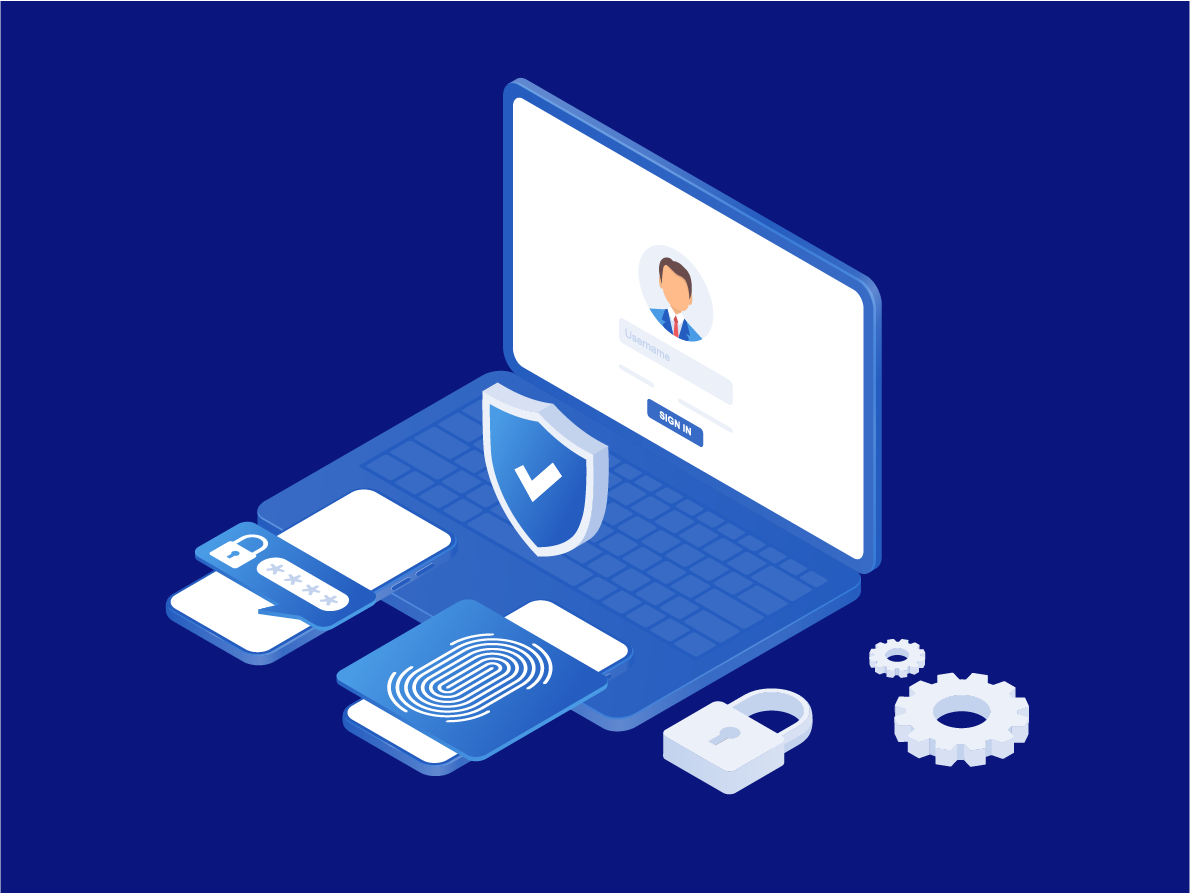
Try LoginID’s Biometric Authentication Solution for Free HERE.
Multiple online channels and devices have been introduced to the public in recent years, making sending messages or making phone calls more accessible to users. Modern tools also improve collaboration between team members and provide options for businesses in marketing their brands. This has led to the telecom industry becoming one of the most vital sectors of society.
Industry experts expect that telecom businesses will continue to grow in the coming years. It is projected that the market size of telecom companies will reach more than $2.8 trillion this year.
Telecommunication firms play a vital role in the new normal, and further progress is expected in the sector in the coming years. However, the nature of the industry makes it vulnerable to bad actors who also use modern tools to exploit security weaknesses to access confidential information.
Security Risks in the Telecom Industry
Whether for business transactions or personal conversations, the telecom industry is a vital connector of people. But the advancements in the sector also increase the need to deploy robust real time fraud prevention solutions to fend off swindlers. The inception of sophisticated technology improved countless businesses, but it also changed the landscape of online security threats.
A distributed denial of service (DDoS) attack remains one of the prime risks that telecom companies face. A successful DDoS operation can shut down the online resources of various enterprises for an extended period. This will cause extensive damage to the organization, including losing clients and investors. This type of attack is also considered an indication of a more harmful large-scale attack on the system.
Apart from direct attacks on the infrastructure, consumers in the sector are also a constant target for fraudsters. Social engineering and phishing attempts are still prevalent, and numerous individuals continually fall prey to these tricks. Furthermore, cybercriminals also have their eyes on one of the essential devices used in the sector – SIM cards.
The Use of Traditional SIM Cards
A Subscriber Identity Module (SIM) Card is a piece of removable hardware inserted into a mobile phone which contains sensitive information about the user. It was first designed to be the size of a modern credit card in 1991 and, through innovation, became the small SIM card known today. This hardware enables users to make calls, send texts, and surf the web. Various online services also use them for mobile identity verification.
But SIM cards are now also widely used by bad actors to perpetrate fraud. SIM swapping is a scheme used by swindlers to access consumers' accounts. If successfully carried out, bad actors can use the account for fraudulent activities, which could result in extensive financial damage for consumers and organizations.
The Growth of eSIM
Recent developments in the sector have led to the introduction of eSIM technology, which is significantly reshaping the telecom industry. The global market of eSIM was valued at almost $9 billion in 2021 and is forecasted to reach more than $25 billion in six years.
Unlike traditional SIM cards, eSIM chips are sealed inside the mobile phone and are not detachable. This type of SIM is already rolled out in many new smartphones, allowing users to remotely rewrite the information stored in their SIM using online applications or a phone call with the network courier. This decreases the hassle of purchasing physical SIM cards, allowing users to transfer between providers on the go.
Mobile network companies can also use eSIM technology to implement an efficient but secured biometric identity verification process. It will help businesses confirm that the person signing up for their services is not linked to any illegal activities in the past. In addition, this will reduce the time spent during the digital onboarding process, allowing the customers to use the services they want once they are done with the application.
Integrating eSIM Technology with FIDO2 Standards
Several modern identity proofing solutions, such as FIDO2 biometric authentication, are already making a mark in the digital security industry. The guideline eliminates the reliance on passwords, which is considered weak protection against swindlers.
Integrating FIDO2 passwordless authentication requirements with the eSIM technology can provide a reliable replacement for physical documents and knowledge-based credentials. Telecom firms can allow prospective clients to conveniently sign-up for their services using mobile applications or websites without compromising the information provided. It will also verify that the people trying to gain access to their services are in fact who they say they are and are not connected to past fraudulent activities.
An eSIM can provide a highly-secure digital ID that they can use for various functions. It might also give mobile network services a vital role in the digital transformation by offering identity proofing solutions with eSIM-based authentication.
eSIM in the Future of Digital Identity Authentication
The telecom industry and its customers are a prime target for fraudsters and regular SIMs have been a security liability that expose them to attacks. The growing need for passwordless authentication will force numerous providers to adopt and integrate reliable mobile real time fraud prevention measures into innovative industry solutions, such as the eSIM.
Recently, LoginID and Oasis Smart-SIM, a leading eSIM activation technology, signed a collaboration agreement to combine LoginID's FIDO2 biometric authentication with their Digital Connect platform. This will allow Oasis to perform digital onboarding for its clients with high security.
LoginID's FIDO2 passwordless authentication solution is highly secure, simple to integrate, and reduces onboarding friction in countless industries. It enables companies to offer clients strong authentication and identity verification across desktop and mobile platforms.
To learn how LoginID can equip businesses with the necessary real time fraud prevention tools, get started by registering for a free account, checking out our tutorial, or reading our documentation.
Sources:https://loginid.io/blog/what-are-e-si-ms-and-how-fido-2-passwordless-authentication-can-help-secure-themhttps://bilginc.com/en/blog/5550/why-is-cyber-security-important-for-telco-companieshttps://www.investopedia.com/ask/answers/070815/what-telecommunications-sector.asp#toc-telecommunications-sector-outlookhttps://media.kasperskycontenthub.com/wp-content/uploads/sites/43/2018/03/07185213/Kaspersky_Telecom_Threats_2016.pdfhttps://www.securityhq.com/blog/rising-security-concerns-in-the-telecom-industry/https://www.iotforall.com/esim-and-the-future-of-secure-digital-identity


